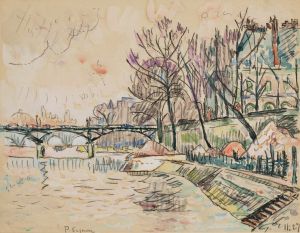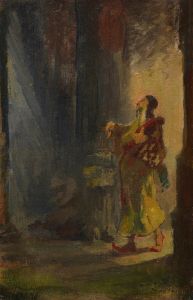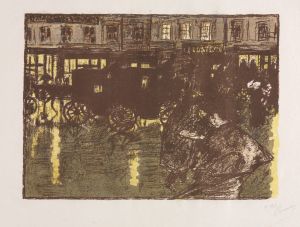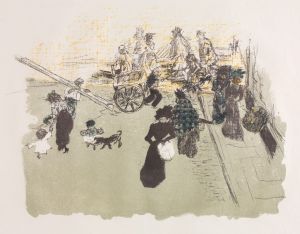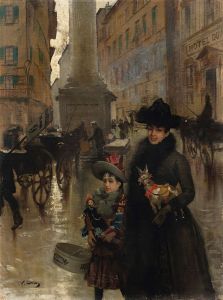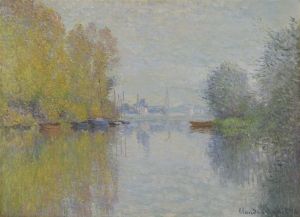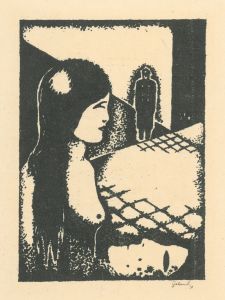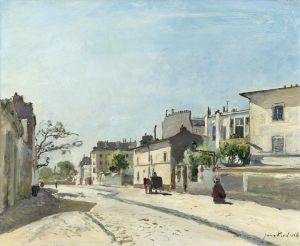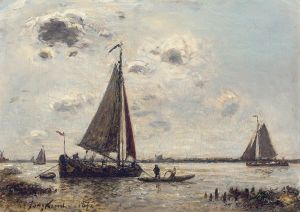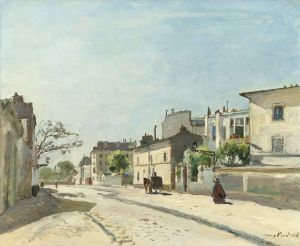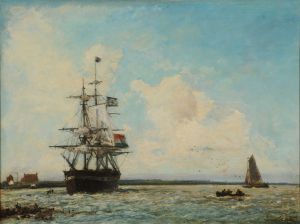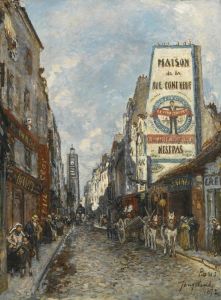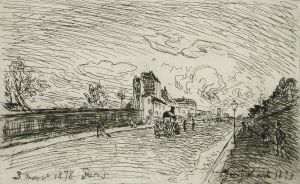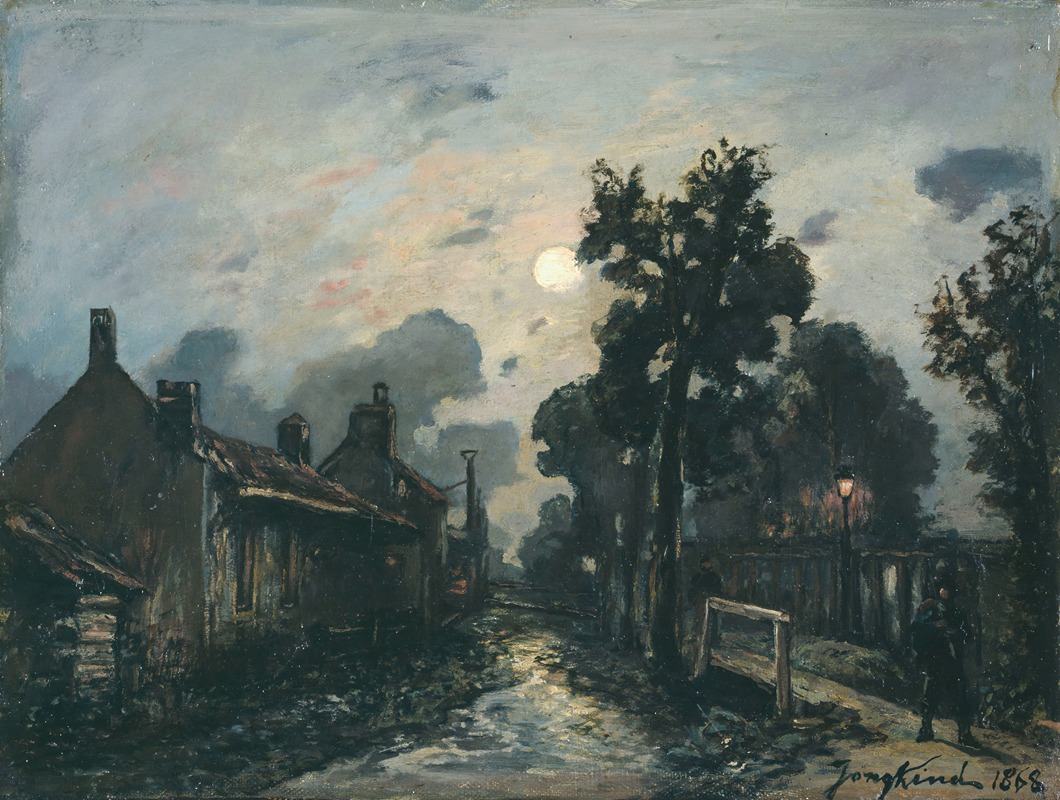
Une rue à Delft, le soir
A hand-painted replica of Johan Barthold Jongkind’s masterpiece Une rue à Delft, le soir, meticulously crafted by professional artists to capture the true essence of the original. Each piece is created with museum-quality canvas and rare mineral pigments, carefully painted by experienced artists with delicate brushstrokes and rich, layered colors to perfectly recreate the texture of the original artwork. Unlike machine-printed reproductions, this hand-painted version brings the painting to life, infused with the artist’s emotions and skill in every stroke. Whether for personal collection or home decoration, it instantly elevates the artistic atmosphere of any space.
"Une rue à Delft, le soir" (A Street in Delft, Evening) is a painting by the Dutch artist Johan Barthold Jongkind, created in 1861. Jongkind, born on June 3, 1819, in Lattrop, Netherlands, is often associated with the Impressionist movement, although his work predates the formal establishment of the movement. He is known for his landscapes and cityscapes, particularly those depicting scenes in France and the Netherlands.
This particular painting, "Une rue à Delft, le soir," captures a serene evening scene in the Dutch city of Delft. Delft is renowned for its picturesque canals, historic buildings, and as the birthplace of the famous painter Johannes Vermeer. Jongkind's depiction of Delft is characterized by his keen observation of light and atmosphere, elements that would later influence the Impressionists.
In the painting, Jongkind employs a muted color palette to convey the tranquil ambiance of the evening. The composition features a quiet street lined with traditional Dutch architecture. The buildings are rendered with a sense of solidity and detail, yet there is a softness to the scene that suggests the fading light of dusk. The sky, painted in gentle hues, reflects the transition from day to night, adding to the overall mood of calm and introspection.
Jongkind's technique in this work demonstrates his mastery of capturing the effects of light on the environment. His brushwork is both precise and fluid, allowing him to depict the textures of the buildings and the play of light and shadow with great sensitivity. This ability to convey the ephemeral qualities of light would become a hallmark of his style and an inspiration to later artists.
The painting also reflects Jongkind's interest in the everyday life of the city. While the street is not crowded, the presence of a few figures adds a sense of scale and human activity to the scene. These figures are not the focal point but rather part of the overall composition, contributing to the narrative of a typical evening in Delft.
"Une rue à Delft, le soir" is an excellent example of Jongkind's work during this period. It showcases his ability to blend realism with a poetic sensibility, capturing the essence of a place and time with both accuracy and emotion. The painting is held in high regard for its technical skill and its evocative portrayal of a quiet moment in a historic city.
Johan Barthold Jongkind continued to paint and exhibit his work throughout his life, gaining recognition and influencing a new generation of artists. He passed away on February 9, 1891, in La Côte-Saint-André, France. His legacy endures through his contributions to landscape painting and his role in the development of Impressionism. "Une rue à Delft, le soir" remains a testament to his talent and his unique vision of the world around him.





